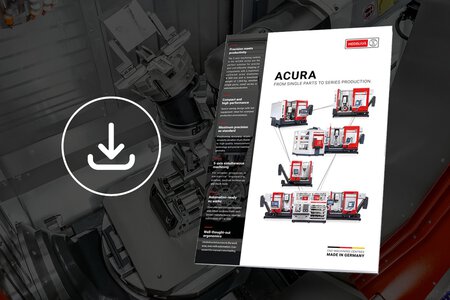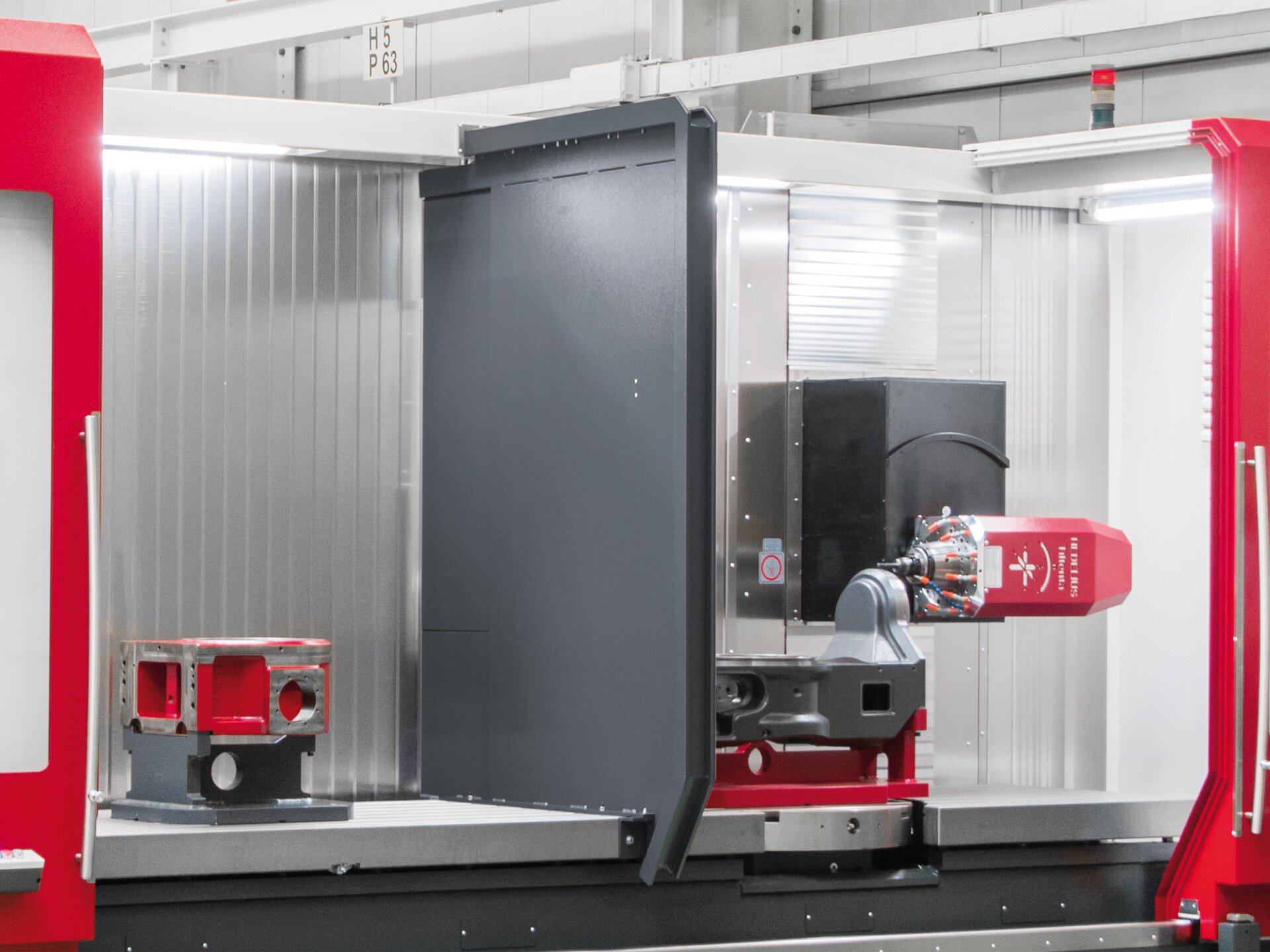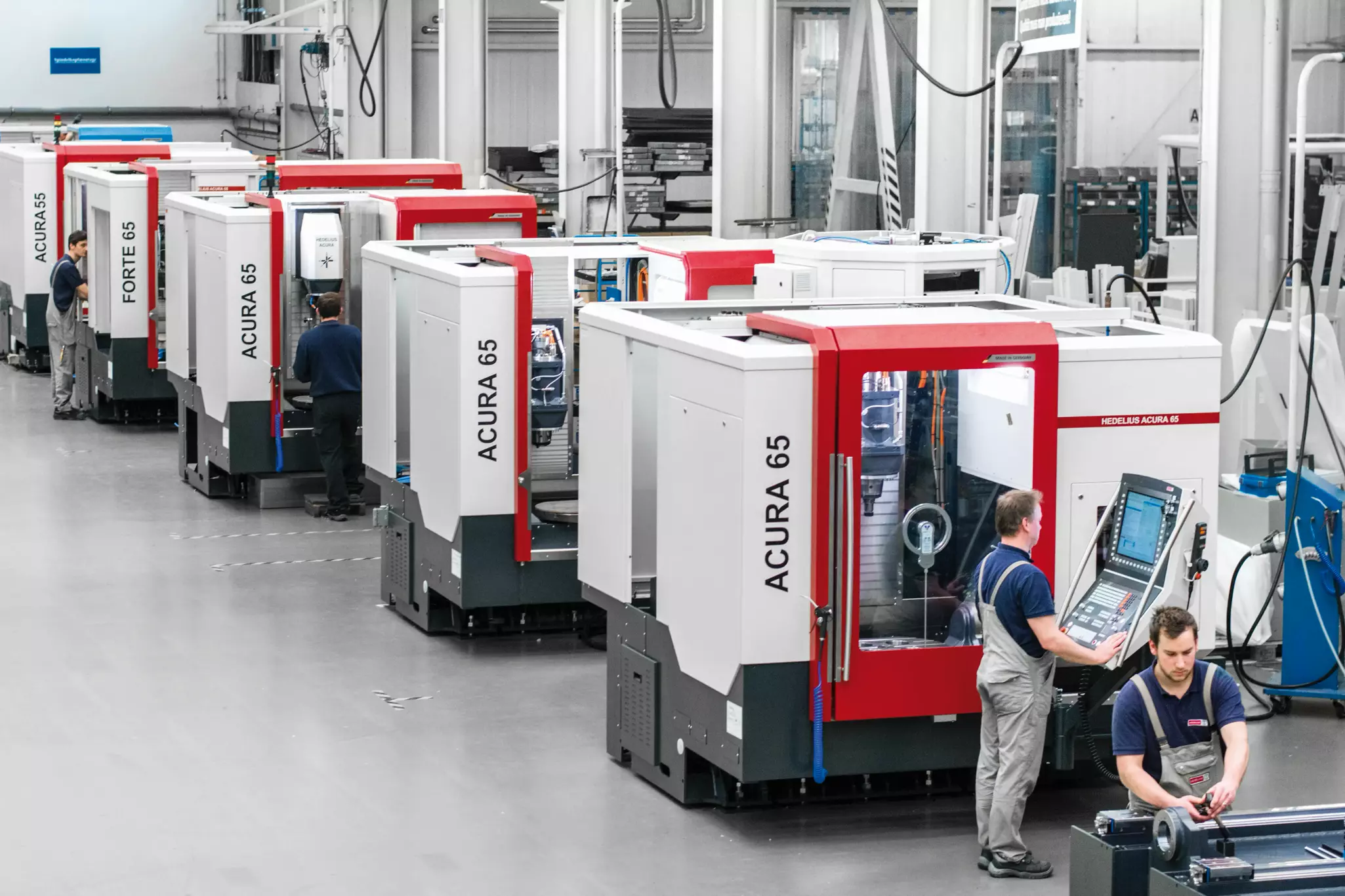15 May 2020
The most compact machining centre of its kind
HEDELIUS opens ACURA 50 on the market
With the ACURA 65 and ACURA 85, HEDELIUS has already set standards in the range of 5-axis machining centres with rotating/swivelling table. Now comes the ACURA 50, a new model that impresses with a compactness that is unrivalled with its amazingly large travel paths.
Built for high-precision machining
Despite its compact design, the ACURA 50 is in no way inferior to the two larger models in the ACURA series. The HEDELIUS-specific design enables high-precision machining, as the distance between the main spindle and the guides of the Y-axis and Z-axis remains constant over the entire travel range. In addition, the Z-axis is cladded to provide protective housing against heat radiation and draughts, which significantly reduces heat transfer. In addition, the feed carriages are solidly ribbed in grey cast iron to absorb and minimise vibrations. The rotating/swivelling table, which is mounted on bearings on both sides and hydraulically clamped, also contributes to precise machining thanks to maximum stability.


Space problems are no longer problems
This means that nothing stands in the way of excellent machining of small workpieces. Slightly larger machining operations are also possible, as the rotating/swivelling table has rotating table dimensions of 500 x 430 mm and can support weights of up to 300 kg. The travel paths of the machine are also designed for this, as the ACURA 50 allows 500 mm in the X-axis as well as Y and Z travel paths of a proud 550 mm, and that with a size of just 2088 mm x 2616 mm or, in other words, a footprint of approx. 5.5 m². Thanks to its very low overall height and low overall depth, the new machining centre can fit into almost any production environment.
Up to 235 tools possible
And despite its size, the ACURA 50 has a 55-station tool magazine as standard, which can be extended by 180 additional tools with a standby magazine, which is also extremely compact and requires only 1.8 m² of floor space. Various spindles with speeds of 14,000, 18,000 and 24,000 rpm, an output of up to 35 kW and a torque of 183 Nm are available. There is also a choice between two different controls, the Sinumerik 840D SL from Siemens and the TNC 640 from Heidenhain, with 21 or 19 inch touch screen, full keyboard and rapid motion potentiometer.


Thoughtful design for users and maintenance staff
The ACURA 50 has been designed in accordance with the proven concept of the AUCRA series. Naturally, the focus of this machining centre is also on the operator. With a height of 800 mm, the machine table is perfectly designed for the user and, like the large machine door, simplifies access to the work area and workpiece. The vertical stainless steel slats ensure optimised chip fall and the chip conveyor can be pulled out to the front on rollers. The integration of the relevant components such as hydraulic system, pneumatic system, central lubrication system, control cabinet and cooling units into the machine cladding is particularly impressive. The ACURA 50 can therefore be perfectly positioned in the machine hall.
The big advantage
Another highlight is the accessibility for maintenance from the left-hand side of the machine. This means that the milling machine can be automated from the right-hand side in the "EL" version, in contrast to the other two ACURA machine types 65 and 85, which are automated from the left-hand side. The big advantage is that one automation solution can be used for tooling two machining centres, one on the left and one on the right. This makes production even more efficient.

More news.

We will be on company holidays from 24 December 2025 to 2 January 2026. Please note that our customer service and sales department will only be available to a limited extent during this period. We will process your enquiries as soon as possible after our return. Further information on contact options and the availability of our customer service and sales team can be found here.

(PDF | EN) Automate your HEDELIUS machining centre with the innovative RoboJob systems and increase your productivity around the clock. Whether small series, medium quantities or unmanned night production: with the Mill-Assist and Tower systems, you can work more economically, reduce downtimes and ensure the long-term competitiveness of your production. Download the free "RoboJob automation for HEDELIUS" folder now and find out how you can upgrade your machining centre to a smart automation solution in just a few steps.

Our HEDELIUS in-house exhibition on 14 and 15 May 2025 was a complete success - and we owe this above all to you! A big thank you to the numerous visitors, but of course also to our dedicated employees and our strong partners. The personal exchange with our guests, inspiring conversations and new impulses made the two days in our technology centre a real highlight.
Take a look back at this successful event with our event video and the impressions in pictures!









































































































































